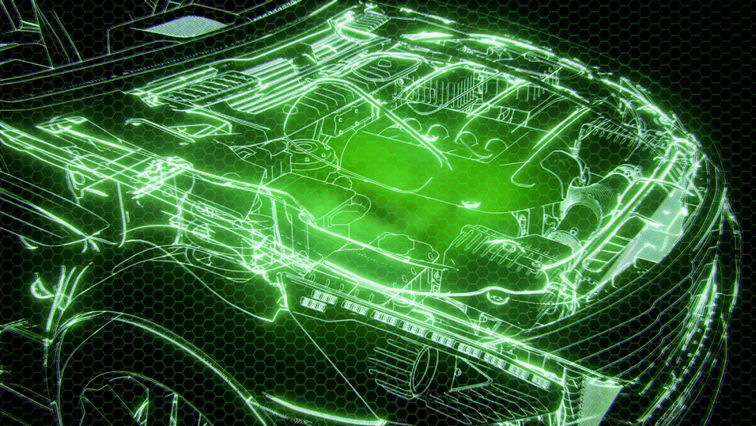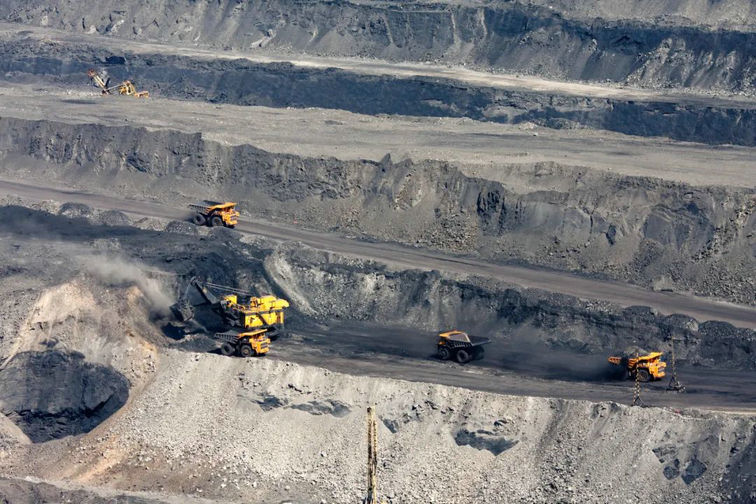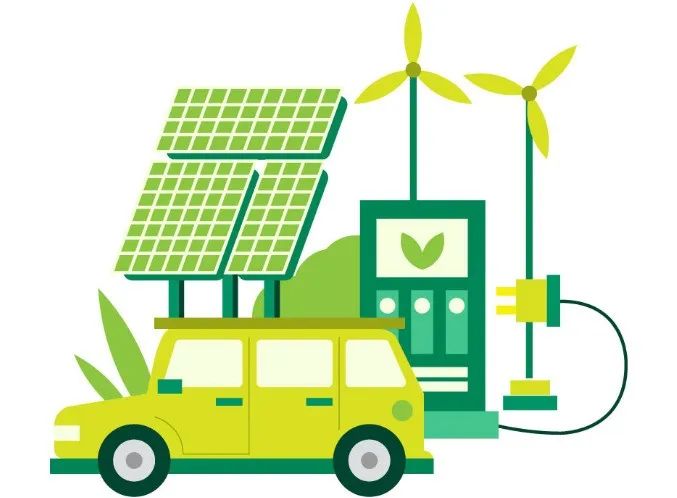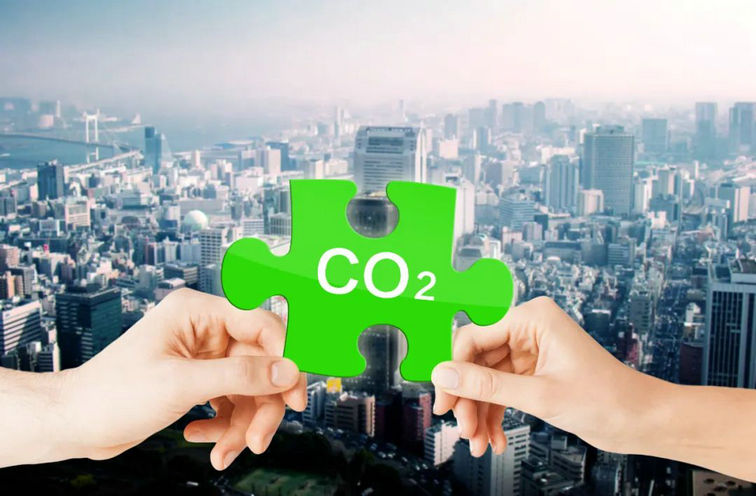| "Carbon cord" automobile supply chain net zero emissions |
| Release time:2022-12-29 10:15:13| Viewed: |
"Carbon cord" automobile supply chain net zero emissions
At the moment when the automobile industry actively practices the "double carbon" goal, it is extremely urgent to accelerate the supply chain decarbonization. The electrification reform "in the name of zero carbon" is in full swing. In the upstream of the industrial chain, the green and zero carbon sustainable supply of key raw materials is affecting the nerves of global car enterprises and suppliers. Inevitable "dependence on key raw materials"
In the first two months of 2022, the price of new energy vehicles has risen sharply. According to incomplete statistics, as of the end of February, more than 10 auto enterprises have announced the news of the price increase of their new energy vehicles. In addition to the shortage of chips and the decline of subsidies, another major reason is that the price of key raw materials for power batteries continues to rise.
The strong market demand for new energy vehicles has led to the growing demand for raw materials and power batteries by vehicle enterprises. Data shows that since 2020, the raw material prices of cobalt, nickel, lithium and other metal elements, which account for nearly 50% of the cost of power batteries, have increased dramatically, ranging from more than 55% to more than 500%.
With the acceleration and popularization of electrification, the automobile industry will increasingly rely on lithium, cobalt, nickel and other raw materials. Previously, Bao Wenjun, director of metal and mining market analysis of BHP Billiton International Trade (Shanghai) Co., Ltd. (hereinafter referred to as "BHP Billiton"), said that the global demand for primary nickel is expected to increase by 1.3 million tons in the next 10 years. From 2020 to 2030, the demand for primary nickel in the power battery industry is expected to increase by about 700000 tons, an increase of more than 500%, accounting for more than 20% of the global total demand for primary nickel. Take BHP Billiton as an example. At present, about 85% of nickel metal is used in the manufacture of battery materials for electric vehicles worldwide
The rapid development of new energy vehicles has not only brought about the demand dependence on the raw materials of power batteries, but also increased the "decarburization dependence" of the automobile industry on the supply chain, especially the raw material supply link, with a view to the whole industry chain and the whole life cycle. After all, the realization of "carbon neutrality" in the automobile industry is not only achieved by the automobile enterprises alone, but also by suppliers in the upstream of the industrial chain. Moreover, the ability of supply chain and suppliers to reduce carbon directly affects the effect of coordinated decarburization of the whole industrial chain of automobile enterprises. "It is estimated that the average carbon emission level of the automotive industry supply chain at present is more than five times that of the direct emissions of vehicle enterprises." Xu Shujie, the director of the ecological business department of China Automotive Data Co., Ltd. (hereinafter referred to as "China Automotive Data"), said at the 2021 annual sharing meeting on research results of comprehensive utilization of automotive resources.
New policies for sustainable supply of global raw materials emerge frequently
From dependence on market demand to dependence on decarbonization policy, in the field of supply chain, green, low-carbon and sustainable supply of new energy vehicle power batteries and key raw materials has received more and more attention worldwide.
Last year, the International Energy Agency (IEA) made a conclusion when looking forward to the global electric vehicle industry: to achieve global net zero emissions by 2050, the annual investment in global clean energy needs to increase by at least three times to $4 trillion by 2030. It is undeniable that with the transformation of the international energy industry to the ultimate goal of achieving net zero emissions, there will be unprecedented changes in energy production, storage and use. Such a change will undoubtedly usher in a once-in-a-lifetime business opportunity for the global manufacturers of new energy vehicles and lithium-ion batteries.
At the same time, at the policy level, in order to achieve net zero emissions, relevant policies are frequently introduced worldwide to promote the sustainable supply of key raw materials for power batteries. According to the Energy Saving and New Energy Vehicle Development Report (2021), with the growing concern about sustainable procurement, many countries and relevant organizations have begun to implement a series of policies to conduct due diligence on the performance of products in environmental protection and supply chain. In fact, the EU Conflict Minerals Regulations came into force in early 2021. It is reported that in order to support the promotion of the popularization of electric vehicles, the Chinese government is also formulating relevant policies on supplier due diligence.
In December 2020, the legislative work on the sustainable procurement of battery production raw materials was increasingly refined. The EU issued a bill on the regulation of batteries and used batteries, which stipulated that in terms of carbon footprint, battery manufacturers should disclose the carbon footprint of all their battery models and batches by 2024. By 2027, all battery models and batches produced by battery plants need to prove that the carbon footprint of the whole life cycle is lower than the maximum critical point (at present, the European Commission has not determined the critical value).
It is also clearly stipulated that by 2027, all battery models and batches produced by battery manufacturers must declare the amount of cobalt, lead, lithium or nickel required for recycling from waste. By 2030, all battery models and batches produced by battery manufacturers must prove that the minimum proportion of raw materials from recycling in their batteries is 12% cobalt, 85% lead, 4% lithium and 4% nickel. By 2035, these minimum proportions will be increased to 20% cobalt, 85% lead, 10% lithium and 12% nickel.
At the same time, it also stipulates the supply chain due diligence, which clearly stipulates that enterprises selling rechargeable new energy vehicles and power batteries will have a mandatory obligation to conduct supply chain due diligence. New raw materials with high risks involved in this obligation include cobalt, natural graphite, lithium, nickel and related compounds.
In 2018, China also issued relevant regulations to ensure that every link in the supply chain is supervised. However, it is worth noting that at present, the environmental compliance capability of domestic suppliers needs to be improved, and the potential risks of environmental compliance need to be resolved. A few days ago, the Research Report on Supplier Risk Rating Assessment in the Automotive Industry (2021) released by the Ecological Business Department of China Automobile Data showed that among the seven risk assessment indicators, suppliers' environmental compliance ability and social responsibility scores were low, with average scoring rates of only 63.3% and 54%.
In this regard, Xu Shujie said that it also reflected from one aspect that suppliers' awareness of environmental compliance management and social responsibility was relatively weak. "Achieving the goal of 'double carbon' requires the joint efforts of the whole industry chain. Whether the suppliers themselves or their direct and indirect suppliers in the supply chain, environmental compliance is both the 'red line' and 'bottom line'. Therefore, it is recommended that enterprises strengthen the supervision and management of suppliers' environmental compliance." Xu Shujie said.
Eliminate "carbon risk"
In order to reduce the carbon footprint of the whole industry chain and the whole life cycle, suppliers, including raw material enterprises, and vehicle manufacturers around the world are actively exploring to achieve sustainable raw material supply and build a green supply chain.
At present, BHP Billiton's West Nickel Company has become one of the most environmentally friendly nickel producers in the world. It has signed solar energy procurement agreements with relevant parties in succession and cooperated in the construction of new solar power plants to meet the power demand of mines and concentrators. It has taken a series of measures to reduce the carbon footprint of raw material mining, smelting and other links and the carbon footprint in the value chain. Not long ago, BASF, another leading supplier of the automobile industry, announced the establishment of the "Net Zero Acceleration Department". The core task of this new department is to accelerate the implementation of low-carbon technology, circular economy and renewable energy related projects. In this way, we will strive to achieve the goal of reducing carbon dioxide emissions by 25% by 2030 compared with 2018 and achieving zero global carbon dioxide emissions by 2050.
In the name of carbon, vehicle manufacturers also increasingly favor low emission raw material suppliers. At present, many car enterprises around the world have formulated the goal of full life cycle carbon reduction, and mobilized suppliers to work together to reduce carbon. Among them, the management and control of suppliers' environmental compliance risks has become the basis and handle of supply chain carbon reduction.
By understanding the source of raw materials purchased by suppliers and other ways, auto enterprises are trying to improve the transparency of the supply chain, and at the same time, they have also formulated a clear supply chain carbon reduction goal. As the first automobile manufacturer to set carbon reduction targets for the supply chain, according to the commitment of BMW Group, by 2030, the carbon dioxide emissions in the whole life cycle of vehicles will be reduced by at least 40% compared with 2019, and the carbon dioxide emissions in the supply chain will be reduced by 20% compared with 2019. In order to reduce the carbon footprint of the supply chain, BMW has joined hands with more and more suppliers in China and other global markets.
It is understood that by the end of last year, in terms of reducing the carbon footprint of raw materials, some BMW aluminum ingot suppliers could reduce 360000 tons of carbon dioxide emissions during the contract period 2021~2023 by using renewable energy in the upstream electrolytic aluminum and aluminum ingot production process. At the level of recycling of raw materials, BMW cooperated with steel suppliers to create the first closed-loop production system of recycled steel, and achieved a total of 45000 tons of steel recycling and closed-loop production in 2020. Through cooperation with battery suppliers, in 2020 alone, BMW will recycle 4347 waste power batteries in China, with a total weight of 98261kg and a recovery rate of 98.5% for nickel, cobalt and manganese.
Wei Lande, president and CEO of BMW Brilliance Automotive Co., Ltd., said in an exclusive interview with our reporter that the criteria BMW Brilliance has always followed in selecting suppliers are quality, innovation, flexibility and price advantages. According to the development trend of the industry, several years ago, the requirements for the sustainable development of suppliers were increased. "The sustainable development capability of suppliers is one of our important assessment indicators. In the process of realizing the low-carbon transformation of the whole value chain, BMW will clearly stipulate in the contract with suppliers, and be ready to pay higher prices for their sustainable development related initiatives." Wei Lande said.
Volkswagen Group and its suppliers have also developed a road map for the use of renewable electricity. According to the road map, by 2030, the Group's suppliers of fuel vehicles and electric vehicles will use 100% of renewable electricity. As of last year, more than 200 suppliers have signed agreements with Volkswagen Group to gradually use renewable power.
Volvo plans in the roadmap of reducing carbon footprint in procurement, and will set the baseline and framework goals to ensure that all primary aluminum (electrolytic aluminum) will use renewable energy in 2025.
"Carbon Game" under Global "Carbon Constraint"
Whether active or passive, based on the goal of "carbon neutrality", the global automotive industry is playing a fierce game under increasingly stringent "carbon constraints". This also means that from the perspective of the whole industrial chain, enterprises and products with low carbon competitiveness will be rejected by the increasingly high "carbon threshold".
In July last year, the EU has officially released the proposal for carbon border tariff policy. According to the provisions of the proposal, all goods imported into Europe will be included in the EU carbon emissions trading system, and carbon taxes will be levied on imported goods through carbon emissions accounting. At present, can China's own brands, especially its own brand electric vehicles, continue to sing all the way without being troubled by various "carbon constraints" in the international market due to the booming overseas export momentum? I'm afraid this is a rigorous test of the carbon footprint level of the entire supply chain of China's automobile industry, from raw materials to parts and components, to the whole vehicle, and from production to sales, use, scrap and recovery.
It is undeniable that at this stage, domestic automobile enterprises and suppliers still have misunderstandings in reducing the carbon footprint of the industrial chain and enhancing low-carbon competitiveness.
"Quite a number of traditional domestic suppliers lack attention to secondary, tertiary and other indirect suppliers, and usually pay more attention to quality, price and other factors when conducting risk assessment, but less attention to environmental protection and compliance risks. These factors lead to the potential risks of suppliers can not be comprehensively evaluated and resolved." Xu Shujie said frankly, "In addition, in the process of supplier risk assessment, due to the large number of suppliers and scattered risk information, the assessment data collection cycle is long and difficult, which brings difficulties to low-carbon and green sustainable management of the supply chain Purchase assurance, quality assurance, legal compliance, environmental compliance, and social responsibility risks will be assessed more quantitatively. Help the industry and vehicle enterprises to effectively identify supplier risks.
In the interview, an industry insider revealed that the data statistics and emission reduction measures of enterprises that have conducted carbon emission accounting are more confined to the main engine plants and primary suppliers than to the entire supply chain. In fact, the main emission of the automobile industry comes from the upstream multi-level suppliers, but usually the supplier's carbon emission data is not under the direct jurisdiction of the OEMs. "Although the carbon emissions of materials, parts and components are not directly controlled by the OEMs, the carbon emissions of materials and parts and components are the relative responsibility of the OEMs. Therefore, for automotive enterprises that conduct carbon emissions accounting, data statistics and emission reduction measures should not only stay at the level of the enterprises themselves and primary suppliers, but also cover the entire supply chain. Enterprises should actively mobilize OEMs and multi-level suppliers to jointly respond to the market for low-carbon products And complete the data collection and submission of the whole supply chain, and work together to reduce carbon under the premise of understanding the carbon emissions of the supply chain, so as to jointly improve the low-carbon competitiveness of products. " The insider finally stressed.
|








